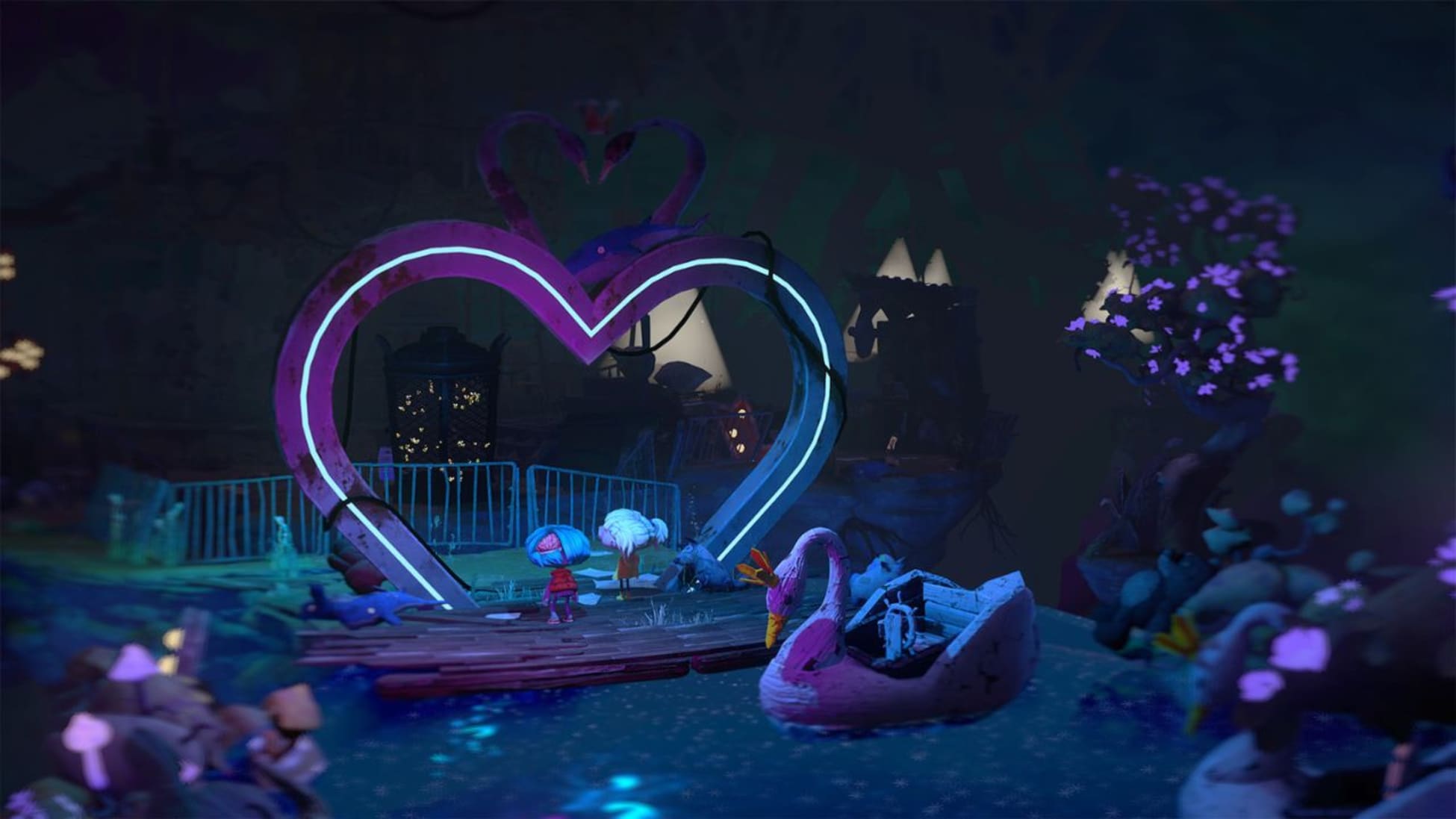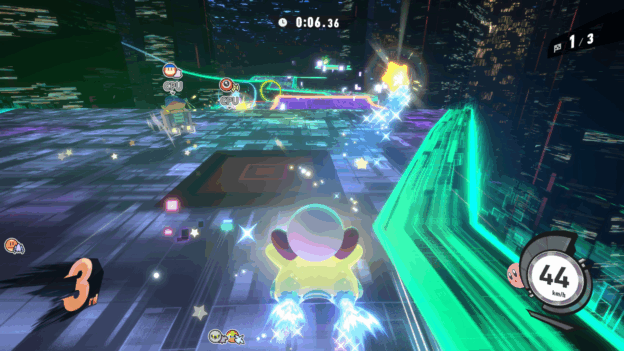Review: Kunitsu-Gami: Path of the Goddess (Switch 2)

Kunitsu-Gami: Path of the Goddess is exactly the type of game I was hoping we’d see on the Nintendo Switch 2. There’s no shortage of great games on the original Switch, but the more experimental ones tend to be the smaller entries. Kunitsu-Gami, on the other hand, is big, beautiful, and surprising…at least for a while.
The adventure begins at the top of Mount Kafuku where the shrine maiden, Yoshiro, is attacked by a horde of demons, called seethe. You control Soh, a warrior tasked with defending Yoshiro. He’s able to keep her alive, but the two are forced to retreat down the mountain. The long path must be purified along the way, and Soh and Yoshiro work in tandem to clear the path and complete the journey.
Gameplay is split into two parts. By day, Soh explores the immediate area to collect crystals, purge the corruption, and free the villagers. The crystals can be used to assign different roles to the villagers so they can assist in the nighttime combat, which I’ll get to in a moment. They’re also used to carve a path down which Yoshiro will dance to cleanse the area.
When night falls, however, everything goes to hell. A demon gate will open at the end of that area’s path, out of which will flow hordes of seethe seeking to slaughter Soh. She will stop dancing (or moving at all, really) at this time, relying on you and the friendly villagers for protection. Did you prepare well enough?
Here, the game switches to action-oriented tower defense. The villagers you freed and assigned jobs to will get to work, provided you placed them correctly. Woodcutters are the early infantrymen. Archers provide support from behind or from higher elevations, and are very important for taking out flying demons. The moment you get used to the villagers’ abilities and devise the best strategies for them, more are introduced, and they’re not always well explained.
Be prepared to replay levels as you learn the best ways to position, level up, and make use of your assigned warriors.
No matter whom you have fighting beside you, the bulk of the work will fall on Soh. He will literally dance through demons in the most satisfying combat I’ve experienced in quite some time. The moves are combo based (mostly chaining your swift (Y) and powerful (X) attacks), but easier to manage than in many action games. Consider it a step more simplistic than the Musou and Bayonetta games you’ve played in the past, but still engaging.
This is where I get to sing the praises of the Switch 2 Pro Controller’s grip buttons. Defensive maneuvers in Kunitsu Gami involve using the L button to block, which is fine, and pressing the L stick down to dodge, which is not fine. Not at all. Pushing down the L stick is not good for anything, let alone something that requires precise timing. With the Switch 2 Pro Controller, I was able to map the dodge ability to both GL and GR, both of which are much more responsive. That made combat so much easier. Mouse controls are also available, but don’t bother. This game wasn’t meant to use them.
Anyway, once day breaks, the seethe disappear and you’re able to continue purifying the area. If you think Yoshiro is able to reach the gate, clear the full path for her and work on obtaining each level’s items. If she doesn’t, however, you’ll leave her stranded too close to the enemy opening. You’ve got to keep your eye on a lot, but that’s what makes the game fun.
After clearing a section’s path, you’ll get access to a village where you can make repairs to obtain items, then use those items to upgrade Soh and the villagers’ abilities. These segments are quite peaceful and make for a necessary break from the intensity of the nighttime battles. You can even pet the animals, which I’m told is important these days.
You also, however, get access to that level’s boss battle which you’ll have to complete to progress. These are much more intense, of course, and rely more on your twitch skills than on careful strategy. You get to pick the jobs of your support team members and obtain power-ups and health packs, but it’s otherwise all about using the right attacks at the right time. If you die, you’ll still be able to float around and command the battlefield until your companions die or finish the job, or you’re able to regain corporeality.
These levels weren’t nearly as fun for me. They’re what a few of us at Pure Nintendo call “finishing the radish;” completing tasks we don’t want to do before moving on to something more fun. Worse, a few of the more troublesome ones really kill the game’s momentum until you’re able to implement and execute an effective approach.
But no matter whether you’re preparing for the demon invasion, actively repelling the demon invasion, or just hanging out with the village-folk post-purge, Kunitsu-Gami: Path of the Goddess is a gorgeous game to play. The graphics are vibrant and detailed, and make excellent use of lighting—especially with the dark levels that require you to activate lanterns in order to see the enemy. The framerates were solid for me throughout, although the display option to activate HDR was grayed out despite my proper 4K setup. I’m not sure if that meant I couldn’t turn it on or if it didn’t need to be.
The visuals and strategic combat carry the game, and they’ll have to. There’s not much of a story to follow (indeed, there’s no dialogue at all—just a lot of gesturing). Gameplay also gets quite repetitive. You’re constantly meeting new demons and getting new jobs/structures to use against them, but the general flow and approach don’t change much. If you’re not invested after a few levels, you never will be.
But I was. I have a few more games to play through, but I’m confident in saying Kunitsu-Gami: Path of the Goddess will become my favorite Switch 2 launch-day title. It’s exactly what I wanted out of a Switch 2 game—excellent visuals, smooth action, and unique gameplay. I hope this Goddess’ path branches off to similar gaming experiences.









